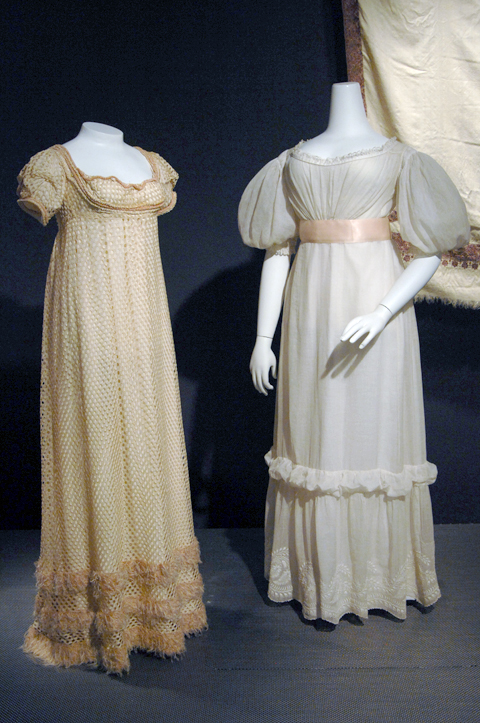

Evening dress
White silk tricot, pink fringe
Circa 1805, England
Museum purchase, P92.2.13
The high waistline and small bust of this dress typify the prevailing style of the first French Empire. The openwork knit fabric reveals much of the wearer’s underclothing while also clinging to her figure, daring to highlight the natural female form. This style is strongly associated with Empress Josephine, the fashionable wife of Napoleon Bonaparte, whose slender figure was ideally suited to the columnar silhouette.
RIGHT:
Dress
White cotton
Circa 1825, England
Museum purchase, P72.1.2
The vogue for white cotton dresses began in the 1780s with Marie Antoinette’s adoption of the informal chemise gown, an unstructured dress with ruffled neckline and waist sash. This dress, probably re-made from an 1810s silhouette, shows a clear affinity to the chemise style. Alterations include a lowered waistline and the addition of full sleeves. In the early nineteenth-century, white cotton dresses continued to be fashionable and their simplicity made them easily adaptable.